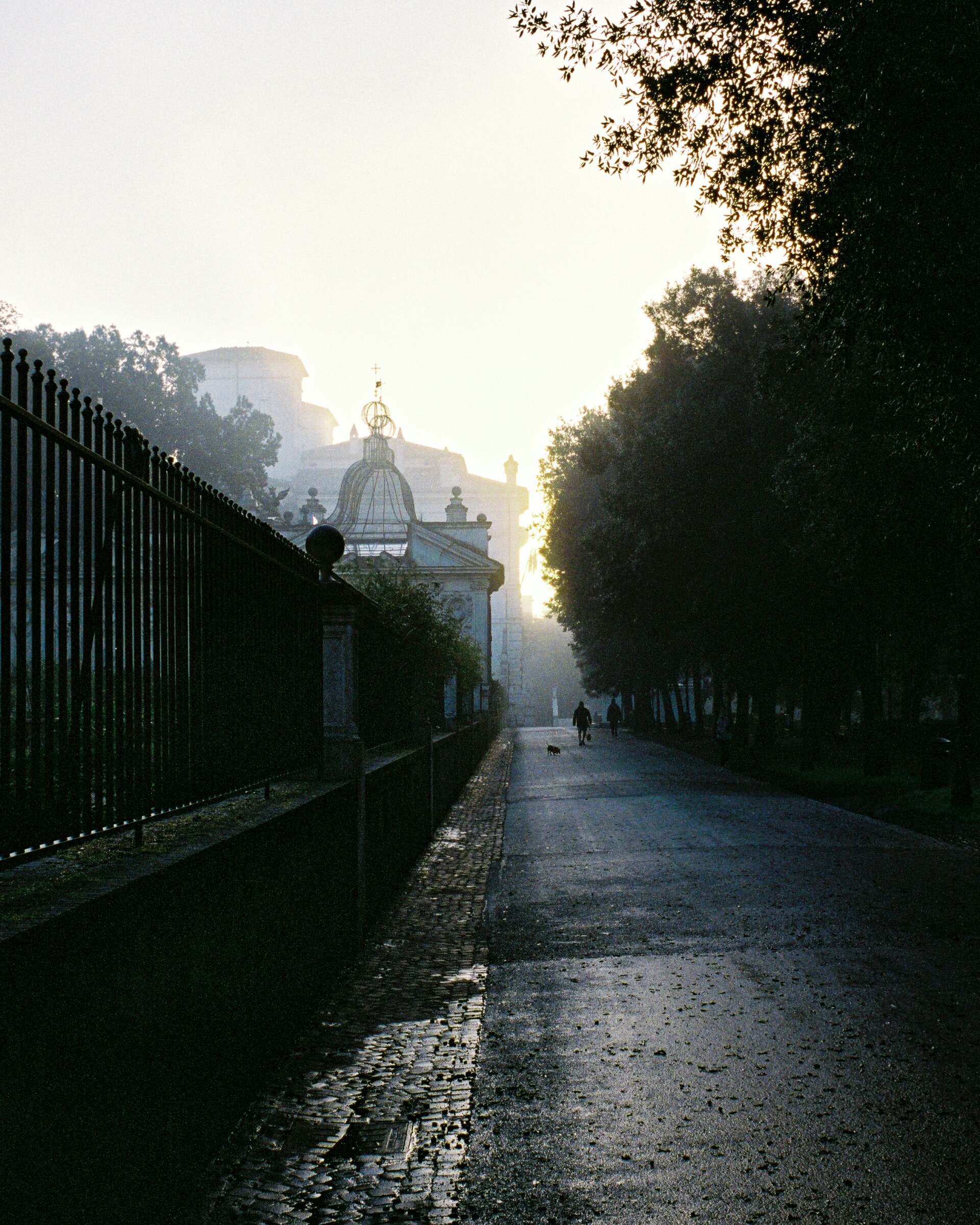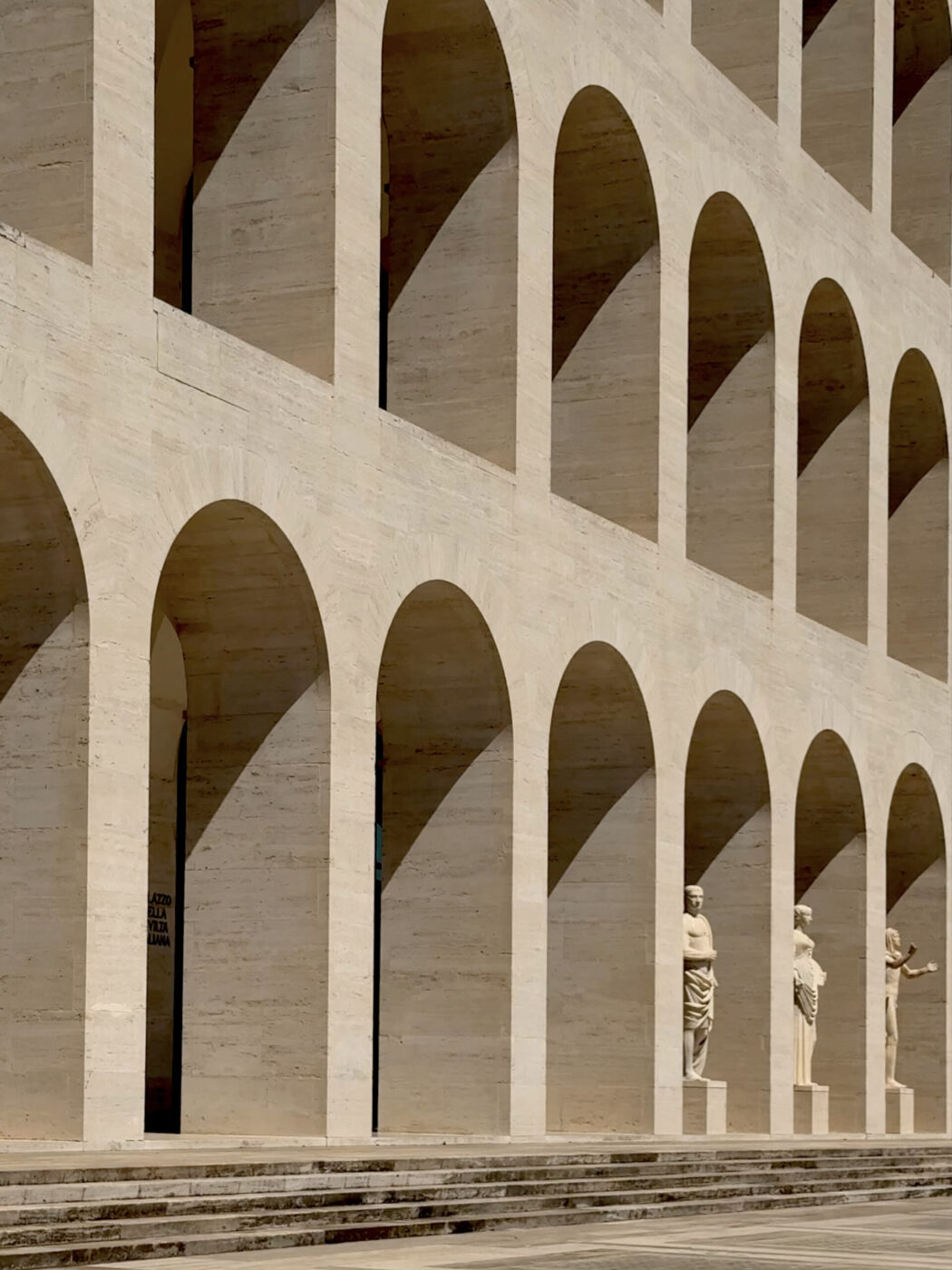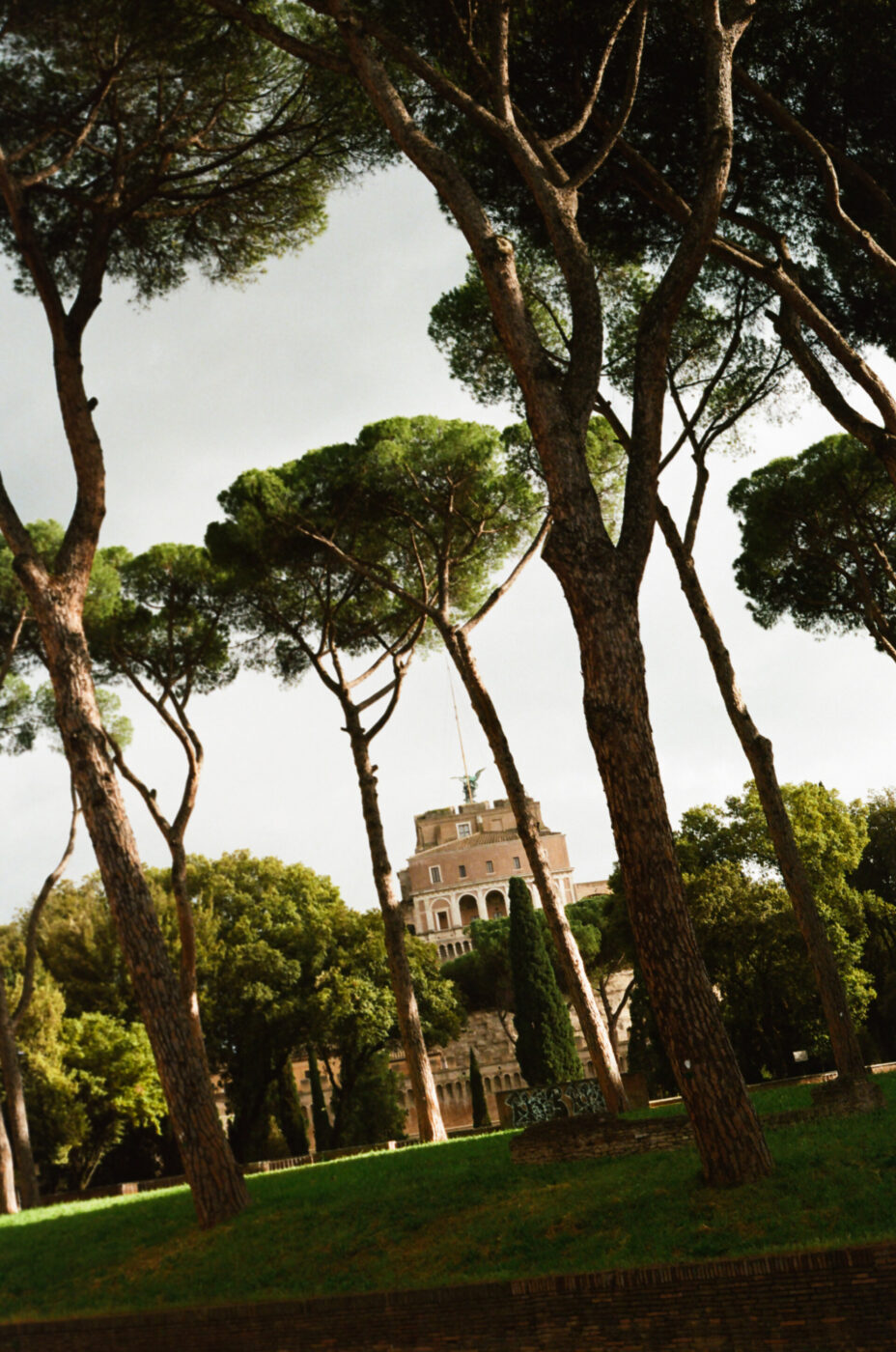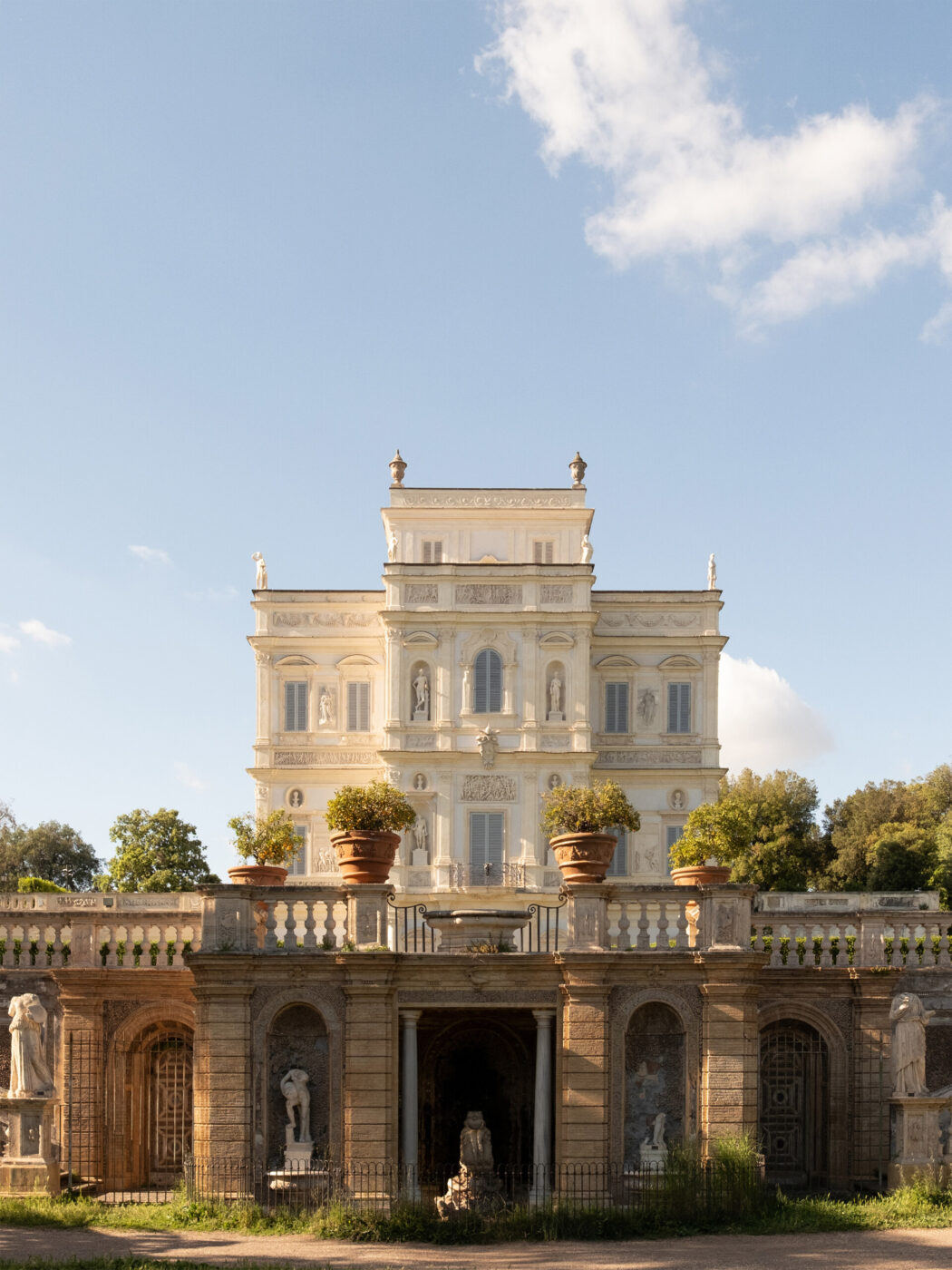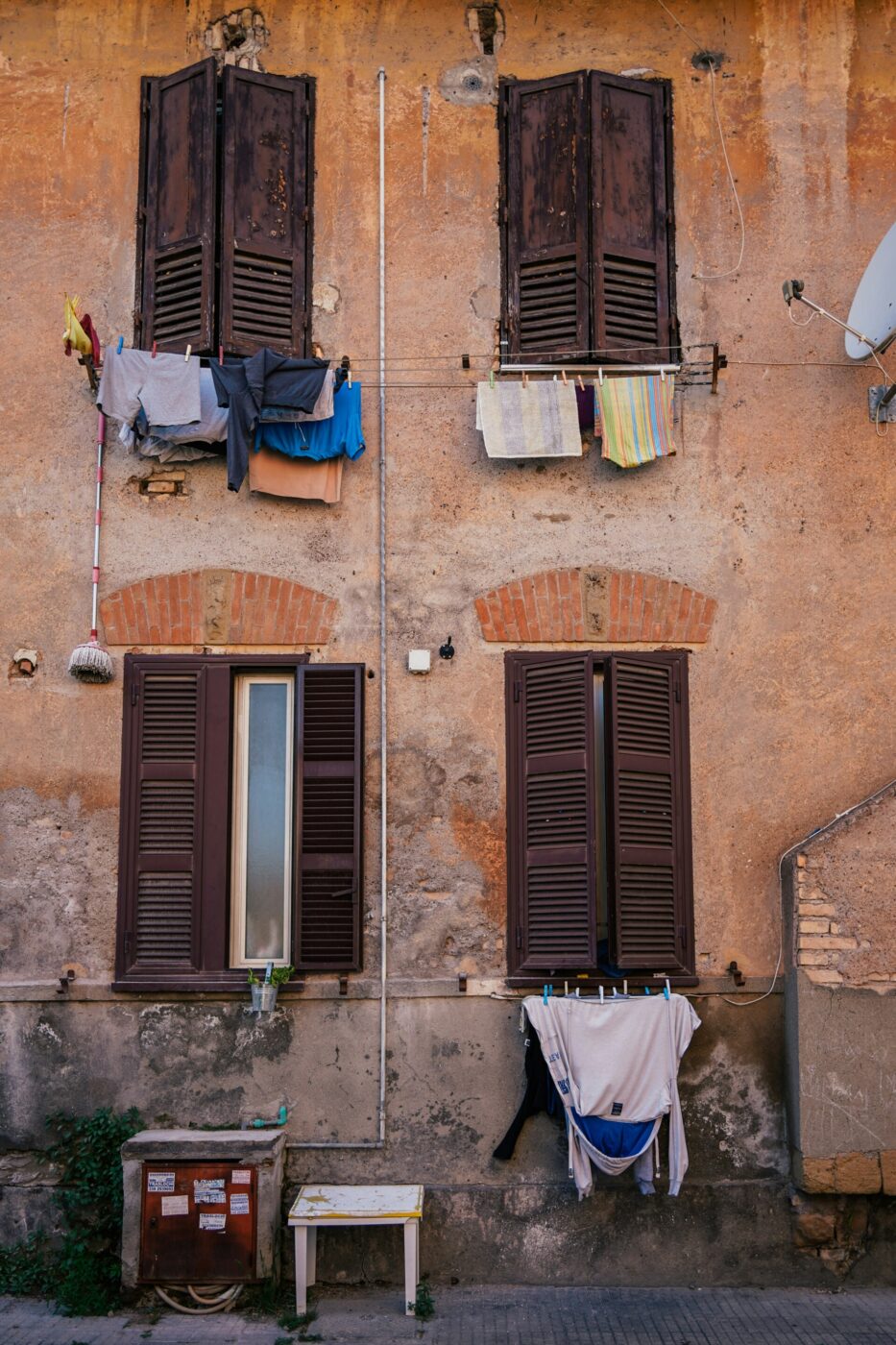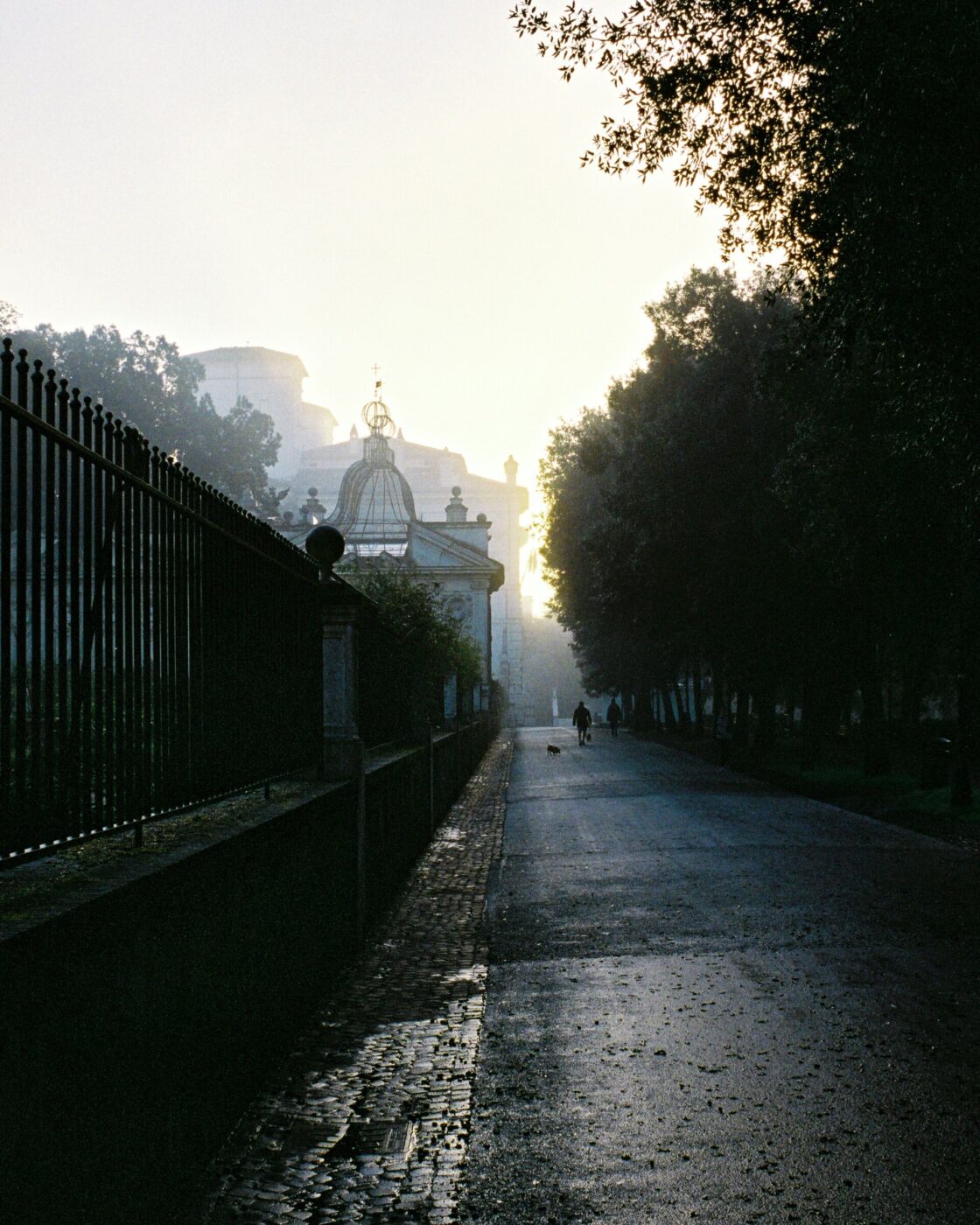As I return, again and again, to Rome, my locus of interest continually moves outward. My feet first touched the city’s sampietrini (iconic cobblestones) 15 years ago, when I was a student on a semester abroad. In that era, I was a centro person. I stayed near Termini, Via Nazionale was my daily commute, and Trajan’s column told me I had arrived. I threw centesimi in the Trevi Fountain and gaped at the Pantheon. Years later, as a newlywed, Trastevere was my neighborhood of choice, with its charming medieval streets by day and its thudding bass by night. Now, I travel with a double stroller in neighborhoods outside the center, like Testaccio, EUR, San Lorenzo, Prati, Monteverde Vecchio, and Garbatella.
If you, too, yearn to discover more of the Eternal City, away from the elbow-to-elbow traffic and influencer posing of centro, read on for profiles of six authentic Roman neighborhoods you should visit. They will reward you with glimpses of everyday life, delicious food, and the space and stillness necessary to digest both your coda alla vaccinara and the fascinating history the tourist throngs never venture far enough out to discover.
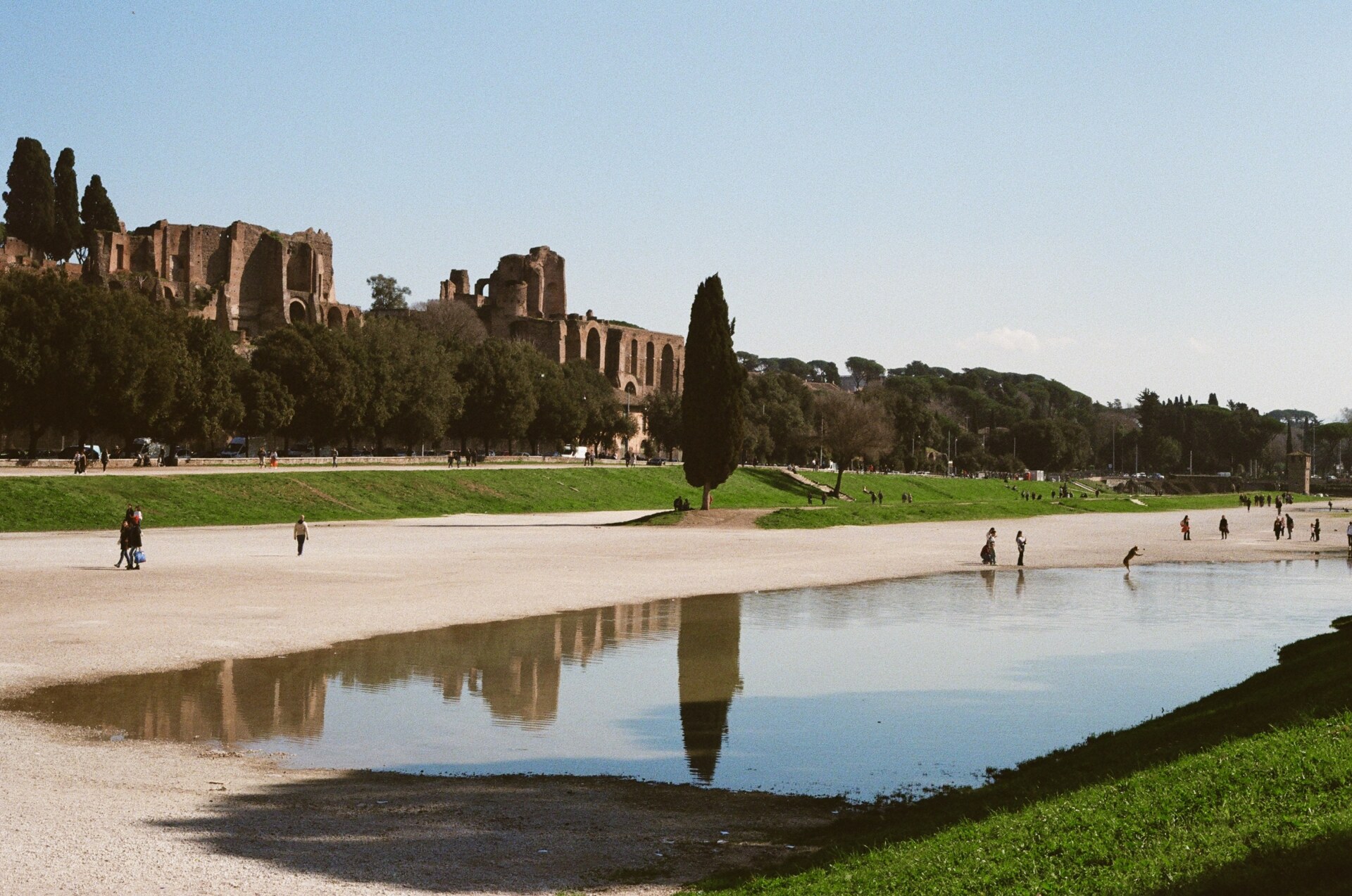
Circo Massimo sits between the Aventine and Palatine Hills—an ideal stop on the walk from the centro storico to Testaccio via Aventino.
TESTACCIO
Testaccio isn’t the most beautiful Roman neighborhood, but I argue it might be the tastiest. Located just outside Rome’s center and delineated by a river-hill-wall boundary (Tiber, Aventine, Aurelian), the neighborhood of Testaccio has a strong identity and an engrossing history.
In ancient Roman times, goods from all over the Mediterranean came up the Tiber River and were unloaded in Testaccio’s river port. In the 20th century, Testaccio claimed the largest abattoir in Europe, and the neighborhood we see today is largely made up of the accommodation built to house its workers, who were sometimes paid in offal (il quinto quarto). As such, the neighborhood developed a number of traditional recipes (including my favorite, coda alla vaccinara, an oxtail stew) that transform this humble “fifth quarter” of meat into something transcendent. If you want to discover a neighborhood with countless contenders for “best meal of your life,” and historical sites much more interesting than their genres suggest (ancient rubbish dump, slaughterhouse, and graveyard), Testaccio is your pick.
What to visit in Testaccio:
Monte Testaccio, an ancient Roman rubbish heap masquerading as an urban hill, made up of cocci, fragments of olive oil amphorae. This mound, now 35 meters high, offers a sweeping view of Rome and can be visited with a reservation.
The Mattatoio, Testaccio’s former slaughterhouse, which is presently evolving into a “City of the Arts.” External rails that used to drag carcasses to and fro stand beside spaces which now host art exhibitions, food festivals, and concerts.
The Non-Catholic Cemetery, the final resting place of John Keats, Percy Bysshe Shelley, and Goethe’s son. Cast your eyes to the east for a towering Egyptian-style pyramid, Gaius Cestius’s 12 BCE tomb.
Where to eat in Testaccio:
At Tram Depot (Via Marmorata, 13), a converted tram car kiosk, for your morning cappuccino and cornetto.
At Mercato di Testaccio (Via Aldo Manuzio, 66b), with its grid of delectable market stalls and charming vendors, for lunch. My favorite stalls are “Le mani in pasta” (Box 58) for fresh pasta, “Enzo e Lina” (Box 89) for cheese, and “Il burino” (Box 81) for fruits and vegetables.
At Flavio al Velavevodetto (Via di Monte Testaccio, 97), an osteria built into Monte Testaccio. For some archaeology with your antipasti, choose the room in Flavio where the layers of ancient amphorae shards are visible. Must orders include a crostino with stracciatella and anchovies, rigatoni alla matriciana, coda alla vaccinara, and a side of cicoria ripassata (sautéed chicory). Roman perfection.
At Piatto Romano (Via Giovanni Battista Bodoni, 62), an osteria where materie prime (the raw materials, or base ingredients of a dish) reign supreme, and are called out on the menu, like yellow zucchina from Sperlonga (Lazio), fermented black garlic from Voghiera (Emilia-Romagna), and white eggplant from Siracusa (Sicily). As its name suggests, Piatto Romano serves up all the Roman classics you know, as well as the bona fide dishes of this city you should make acquaintances with, like coratella d’abbacchio con cipolla (the lung, heart, kidney, and liver of lambs sautéed with onions), misticanza (a salad of foraged greens with an anchovy sumac dressing), and rigatoni alla pajata (a pasta that seems to be made up of ricotta-filled ravioli, but is in fact sections of suckling calf’s intestines filled with cooked milk).

EUR
This is a part of Rome that no tourist envisions, but it’s enthralling all the same. The EUR is grand on an unsettling scale, with boulevards that aren’t just wide—they’re immense—and symmetry that isn’t just aesthetically pleasing—it’s eerie. Towering buildings, mirroring each other down the street, dwarf the people, making you feel like a tiny worker bee in awe of the powers that be.
The Esposizione Universale di Roma (EUR) was conceived by Mussolini as a site for the 1942 world’s fair to celebrate two decades of Fascism. World War II intervened, the fair never took place, and the neighborhood was reimagined as a business district. A square colosseum looms in the west, now home to Fendi’s headquarters. Skyscrapers house corporate headquarters like Eni, waterfalls cascade into an enormous artificial lake, and the Basilica dei Santi Pietro e Paolo strikes you with its modern geometry. Get your steps in around this massive neighborhood for a glimpse of modern Roman working life set against a backdrop of Fascist monumentalism.
What to visit in EUR:
The Palazzo della Civiltà Italiana, also known as the “Colosseo quadrato” (“Square Colosseum”). This imposing building, its statuary, and its 216 arches (24 less than the OG Colosseo) are lovely to see from the outside, and the first floor of the Fendi headquarters also hosts periodic exhibitions.
The Giardino delle Cascate, a park where water is the star. Waterfalls tumble into terraced pools while fountains spray extravagant arcs. Climb up to the viewpoint for a dramatic sightline straight to the modern and massive Marconi Obelisk. Walk the path that follows the perimeter of the lake, the Passeggiata del Giappone, to admire cherry trees donated by the city of Tokyo.
Where to eat in EUR:
At Lievito (Viale Europa, 339) for a pizza crafted by Francesco Arnesano, a student of Gabriele Bonci. Both Roman pizza styles are on offer: pizza in teglia, the rectangular version with the thick crust baked in a sheet pan, and pizza tonda, the circular version with that thin, crispy crust. Lievito’s offerings extend beyond pizza into other corners of the carb universe (lievito does mean yeast) with their panettone, loaves of bread, and cantucci. If you can walk a little further to their location at Via Simone Martini 6, you can even get a square version of the maritozzo (a yeast bun stuffed with whipped cream particular to Rome), created in homage to the EUR’s square colosseum.
At Gelateria Torcè (Viale dell’Arte, 9A) after you’ve tired yourself out pounding the pavement and are in need of gelato sustenance. Torcè is one of Rome’s famous, boundary-pushing artisanal gelaterie. For 20 years they have experimented with flavors from habanero to taleggio and balsamic vinegar. But don’t worry, traditionalists, their chocolate has also won the Gambero Rosso Best in Italy award.
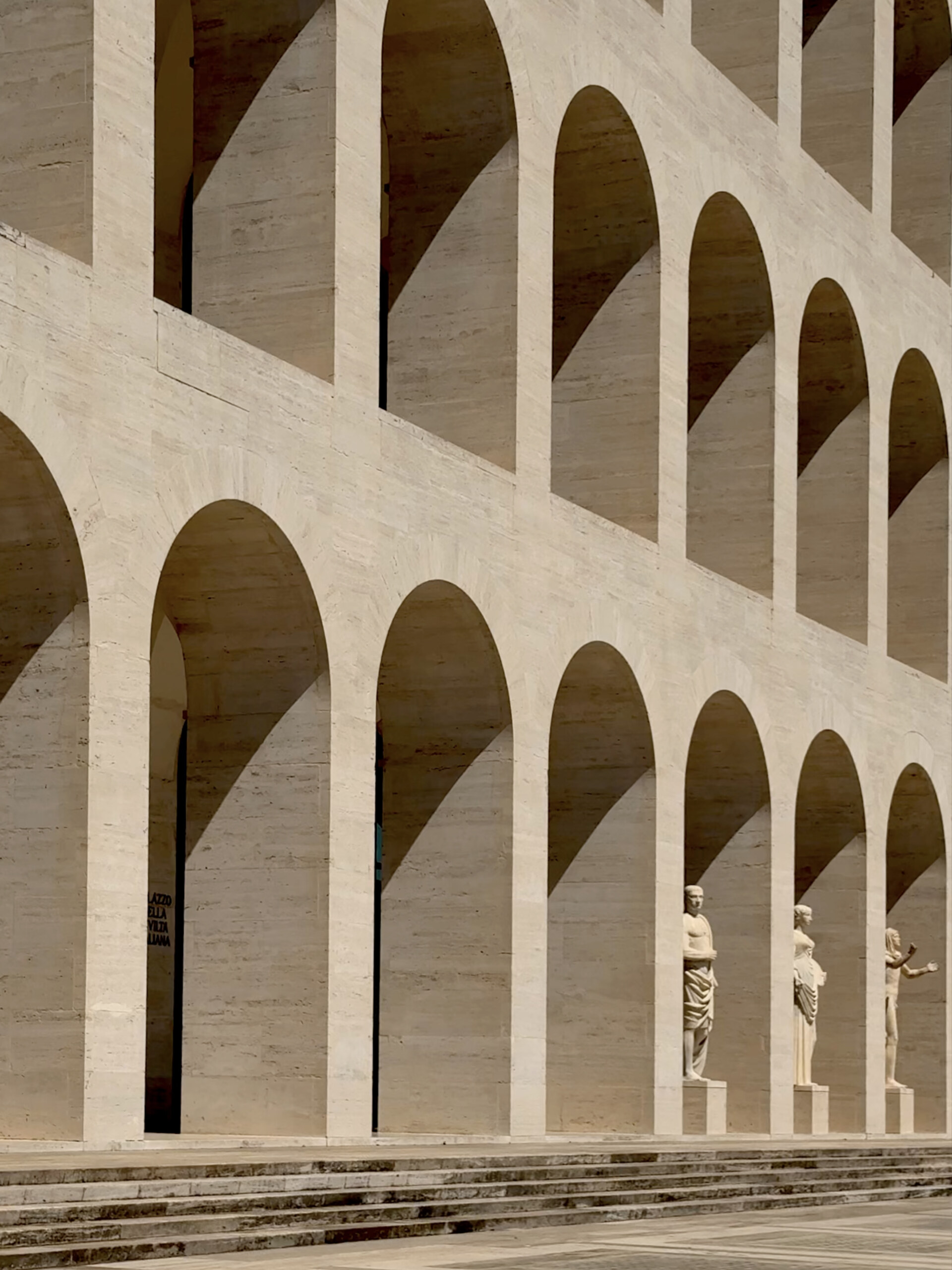
Palazzo della Civiltà Italiana; Photo by Matteo Capirola
SAN LORENZO
When your train drops you at Termini station, head east and you’ll find San Lorenzo, a neighborhood beloved by students and named after the saint who legendarily said, while being burned alive on a gridiron, “You can turn me over now. I’m done on this side.” Italy’s biggest university, La Sapienza, has its campus in San Lorenzo, and with the large student presence comes lively nightlife, lower prices, and graffiti portraits of Ray Charles.
San Lorenzo has a profoundly anti-fascist, left-leaning history and is now a neighborhood of contrasts. You’ll find both pervasive graffiti and experimental art collectives; social activists and gentrifying developers; derelict buildings bombed in WWII and the gorgeous, monument-studded park that is the Verano cemetery. Peruse a bookshop dedicated to graphic novels at Giufà Libreria Caffè; take in an underground cabaret at Conventicola degli Ultramoderni; and whet your appetite with an aperitivo at a cocktail bar filled with locals. San Lorenzo is gritty, but its energy is undeniable.
What to visit in San Lorenzo:
The Basilica di San Lorenzo fuori le Mura. Its simplicity will cast a spell on you—windows filled with perforated stone, not stained glass; walls of exposed brick, not marble. The color palette is subdued and the geometry elegant. The floor, though, is balling: a kaleidoscope of tesserae in the Cosmatesque style.
Giufà Libreria Caffè, a 20-year-old independent bookstore, to browse their selection of contemporary fiction, graphic novels, and comics. Giufà is also a cafe, so you can stop in for a snack, coffee, or literary aperitivo. As a cozy space, it’s not an ideal spot to park yourself and work—more to mingle, chat books, buy local biodynamic wine, and attend readings.
Where to eat in San Lorenzo:
At Mazzo (Via degli Equi, 62), a “listening trattoria” with vinyl records lining the back wall and Spotify playlists to boot. Gastronomic pilgrims will remember Mazzo’s first incarnation as a small kitchen and laboratory in Centocelle, an outer neighborhood in Rome’s southeast. Now in a much larger location in San Lorenzo, Mazzo is a mix of tradition and reinvention, its menu taking inspiration from its city as well as broader Italy, with offerings such as busecca (Milanese-style tripe), pasta alla campidanese (a Sardinian ragù), and the classic Roman rigatoni all’amatriciana.
At Tram Tram (Via dei Reti, 44/46), an osteria offering classic Roman dishes and traditional fare from coastal Puglia. The concept isn’t fusion, but rather, in their elegant words, two distinct souls coexisting. Your dining partner might order the quintessentially Roman cacio e pepe, while you opt for linguine all’isolana (islander’s linguine) with grouper, capers, olives, and wild fennel, closing your eyes and dreaming of the Pugliese shoreline until you hear that Roman tram whiz by outside.

Courtesy of @mazzo_roma
PRATI
The clack of dress shoes in Prati isn’t the only sign this neighborhood is well-heeled. Suits abound. Art Nouveau buildings line elegant streets, four of which converge in a circular intersection with a Caryatid fountain at its center. This neighborhood also wins the title for most put-together park I’ve ever seen in Rome: Piazza Cavour, with its manicured, green grass and artfully placed palms. It sits in front of the ornate supreme court, named in epic fashion the Palace of Justice, but referenced colloquially by Romans as Palazzaccio, the Bad Palace. Prati is, in fact, Rome’s lawyer district.
Located just north of Castel Sant’Angelo, Prati is a great base, especially if the Vatican is high on your list. After braving the tourist hordes of St. Peter’s Basilica and the Vatican Museums, head back to this neighborhood for a chic and authentic retreat. Buy a sport coat or a bottle of perfume on Via Cola di Rienzo, Prati’s shopping boulevard; eat in delicious restaurants filled with real Romans; and take a DIY walking tour of eclectic architecture—you’ll find buildings in this neighborhood you’d never expect Rome to have.
What to visit in Prati:
Chiesa Sacro Cuore del Suffragio, which will make you do a double take and doubt which city you’re in. This neo-Gothic church sticks out like a gleaming white sore thumb on the Lungotevere. Looking nothing like its neighboring buildings, it appears to be Milan’s Duomo in miniature. If you have a taste for the supernatural, the church also houses a museum with objects said to prove the existence of souls in purgatory.
Villino Cagiati, an ornate villa in the Liberty Style, which was Italy’s take on Art Nouveau. Think 1902 more is more. There are turrets, towers, and balconies. A band of braided sunflowers is frescoed under the cornice, while fruits and vegetables are crafted in maiolica to decorate the exterior walls. An inscription proclaims “IN ARTE LIBERTAS” (“let there be freedom in art”). There’s even a lion statue. If you’re a fan of Quartiere Coppedè, take a stroll past Villino Cagiati—it’s very reminiscent.
Where to eat in Prati:
At Cacio e Pepe (Via Giuseppe Avezzana, 11), a casual, economical trattoria with most seating on their streetside patio. This eatery has no paper menu (always a great sign), so check out their chalkboard for the daily offerings. The eponymous cacio e pepe is delicious. They also offer half portions, so you can try even more Roman specialties than usual.
At Panificio Bonci (Via Trionfale, 36), Gabriele Bonci’s bakery just over the border into Trionfale. Yes, Bonci is a celebrity chef (you may know him from the Netflix series Chef’s Table: Pizza), but this isn’t a hype-based recommendation. He truly is a dough master, and the baked goods at Panificio Bonci don’t disappoint. Grab a slice of classic pizza in teglia or opt for some innovative toppings. The loaves of bread, pastries, and supplì are lovely too.
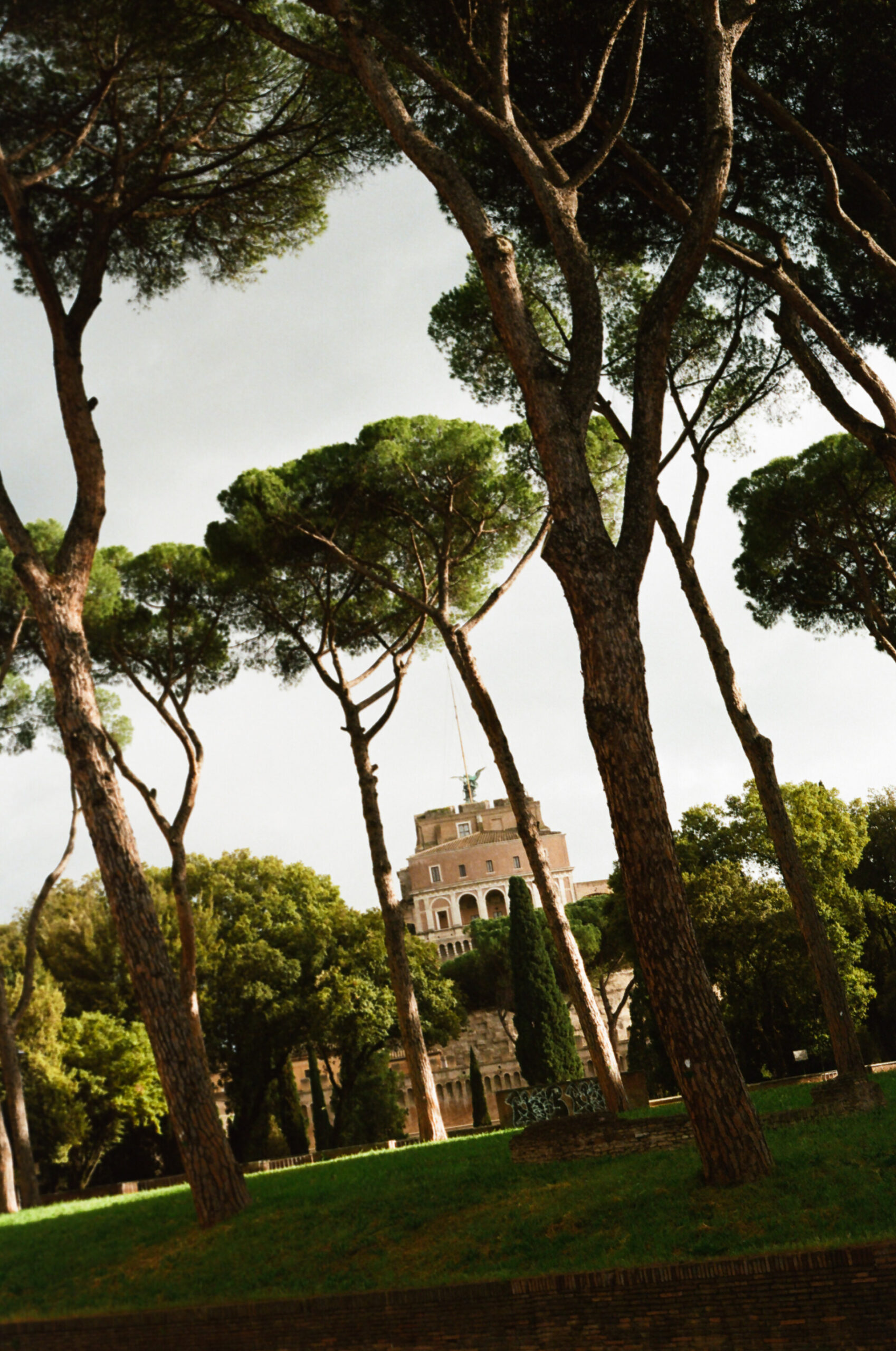
MONTEVERDE VECCHIO
Monteverde Vecchio is a joy to walk, if you love picturesque residential neighborhoods and don’t mind hills. This neighborhood is just southwest of Trastevere, on the other side of the Gianicolo (Janiculum Hill). Curving streets named after Italian poets carve the neighborhood, and apartments of apricot, almond, and tangerine reveal themselves after every bend, shaded by stately umbrella pines. Though you may not have heard this neighborhood’s name, you’ll recognize the people who have shaped it: Caesar, Cleopatra, Mussolini, and film directors Pier Paolo Pasolini and Nanni Moretti have either courted, built, or lived here.
As you may intuit from its name, Monteverde Vecchio is very green, and boasts two showstopping parks: Villa Sciarra and Villa Doria Pamphilj. Fancy an afternoon fantasizing about buying a beautiful apartment and moving to Rome? This is the neighborhood to amble around while ogling palazzi and their promises of verdant courtyards. After your daydreaming, head to Via Giacinto Carini, Monteverde Vecchio’s main commercial street, for some sustenance.
What to visit in Monteverde Vecchio:
Villa Sciarra, technically just over the border into Trastevere, which began as a sanctuary to the nymph Furrina in ancient times, became the pad in which Caesar hosted and courted Cleopatra, and ended up being gifted to Mussolini by Henrietta Tower on the condition it become a public garden for Rome. It is now a green oasis filled with exotic and Mediterranean plants, satyr fountains, and statuary set into laurel hedge niches.
Villa Doria Pamphilj, Rome’s largest landscaped public park. Get lost in its 450 acres of sprawling green spaces; marvel at the Casino del Bel Respiro’s formal gardens; and watch Romans jog, chat with their friends during passeggiata, and walk their seemingly innumerable dogs.
Where to eat in Monteverde Vecchio:
At Le Café Vert (Via Anton Giulio Barrili, 47), a diminutive and sophisticated bar. Enjoy your morning cappuccino and pastry while studying their pretty tables decorated with old maps of the neighborhood, or stop in for lunch or aperitivo.
At La Mescita Monteverde (Via Fratelli Bonnet, 5), a wine bar and casual eatery that straddles the expat-local divide. Go for brunch and you can order a flat white—even to go, gasp!—and avocado toast; come back in the evening and enjoy a natural wine from Lazio and a creamy baccalà cone. La Mescita also has a location in Garbatella.
At Ristorante Il Cortile dal 1929 (Via Alberto Mario, 26), an eatery with nearly a century of history in this neighborhood. Il Cortile’s original offerings were wines by the glass from Velletri, a nearby town of the Castelli Romani, with accompanying fettuccine and spezzatino. Now this homey locale, run by the fourth generation of the Salvi family, serves dishes like bruschetta con salsiccia di Amatrice (fitting, as bisnonno Giovanni hailed from Amatrice) and a variety of dishes from both the land and the sea, like beef tartare and paccheri with tub gurnard and Taggiasche olives. Sit on the streetside patio for a lovely view of a particularly charming Monteverde Vecchio street.

Villa Doria Pamphilj; Photo by Matteo Capirola
GARBATELLA
The vibe of Garbatella is romantic and old—a lovely place to wander. There are a surprising number of trees. Forests also grow on the roofs of apartments, TV antennae reaching for the heavens like branches for the sun. The buildings are villa-esque, painted with warm, patinated colors and embellished with arches, balconies, and interesting facades. It’s hard to pin down the architectural style—Baroque? Renaissance? Rationalist?—and thus the age of the neighborhood. This is the intended reaction.
Garbatella was built in the 1920s to house working-class families moving to the city, so its planners tried to evoke the small villages from which the workers came. This faux mix of architectural styles was meant to minimize the shock of moving to the big smoke, to make the residents feel more at home, and leads the modern tourist to think the neighborhood evolved over many centuries. In fact, it took only 20 years.
What to visit in Garbatella:
The courtyards and gardens inside the neighborhood’s lotti (groups of apartment buildings). Garbatella is full of these tranquil green spaces, so it’s not surprising that its development was modelled after England’s Garden City Movement. You can download a map of these 62 lotti if you want to plan a specific route, or just start at Piazza Benedetto Brin and head east to the curving, quaintest streets of central Garbatella.
The Teatro Palladium to take in a play, dance performance, or concert. This building was built as a cinema in the 1920s and is now used as a theater by Università Roma Tre.
Centrale Montemartini, a museum of Roman antiquities set in Rome’s first electrical power station. The juxtaposition of classical statues in front of turbines and engines is arresting. This museum is just over the border between Garbatella and the neighborhood of Ostiense. To get here, cross the Ponte Settimia Spizzichino, a strikingly modern bridge dedicated to a Jewish woman who incredibly survived Auschwitz, Mengele’s experiments, and Bergen-Belsen to return to her hometown of Rome.
Where to eat in Garbatella:
At Al Ristoro degli Angeli (Via Luigi Orlando, 2), an osteria that serves hyperlocal fare, like their patate della Garbatella, alongside dishes with international influences, like ginger shrimp in Kataifi pastry. Vegetarian options are always available, and Michelin has recognized the osteria’s friendly atmosphere, high quality food, and moderate prices with its 2022 Bib Gourmand award.
At Tanto pe’ Magna’ (Via Giustino de Jacobis, 9), a great casalinga (home cooking) osteria that caters to locals. This unfussy eatery serves Roman favorites like the city’s canonical pastas, trippa alla romana (Roman tripe), saltimbocca alla romana (prosciutto-wrapped veal with sage), coda alla vaccinara, and carciofi alla romana (Roman-style braised artichokes).
––––––––––––
Try to dig anywhere in Rome, and you’re bound to find a new thrilling piece of its history. (Why do you think the Metro C line is taking so long to build?) This phenomenon also works laterally. The next time you’re in Rome, follow its radius out a little further, and dig deeper into the city’s history, gastronomy, and Romanness.
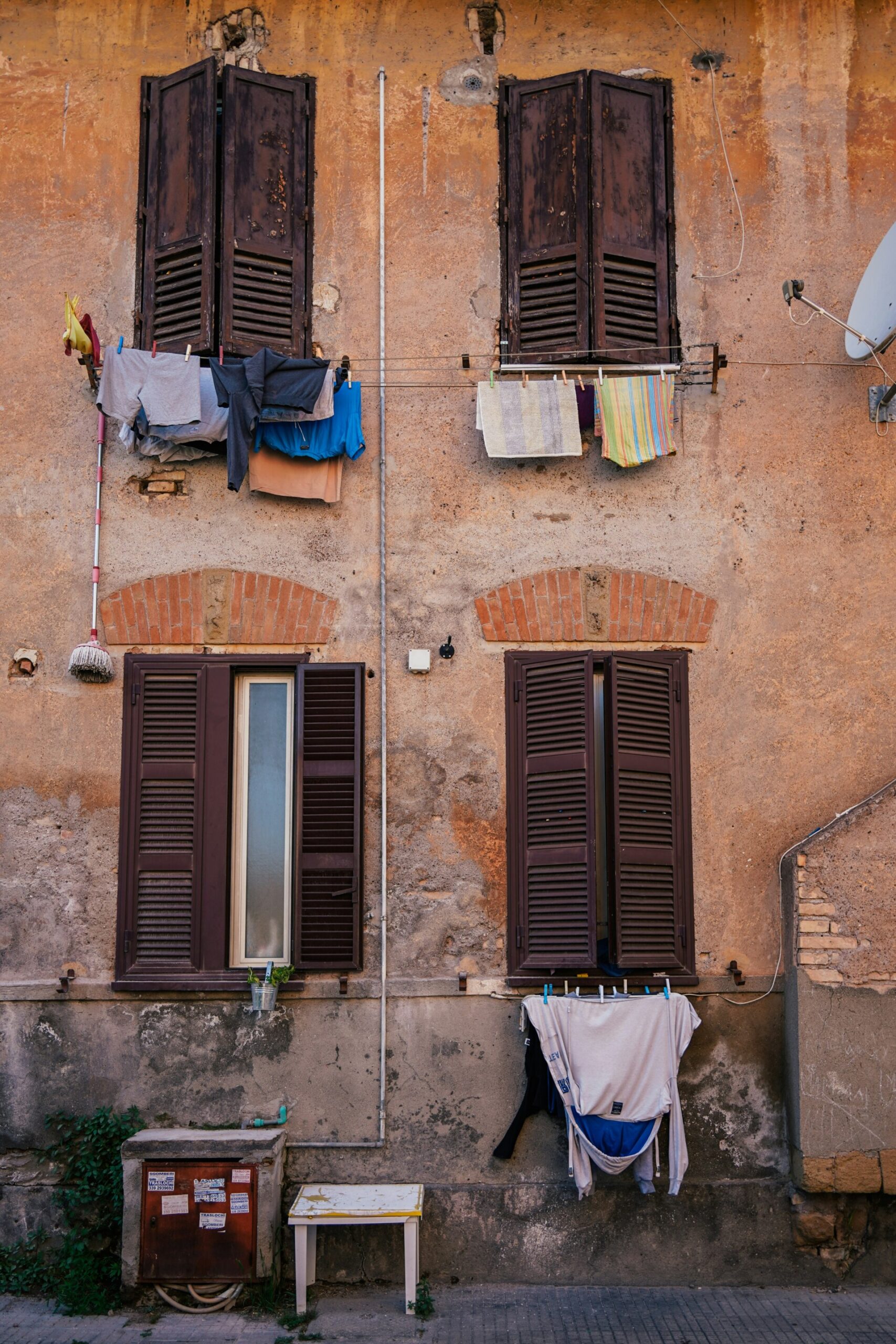
Photo by Gabriella Clare Marino
